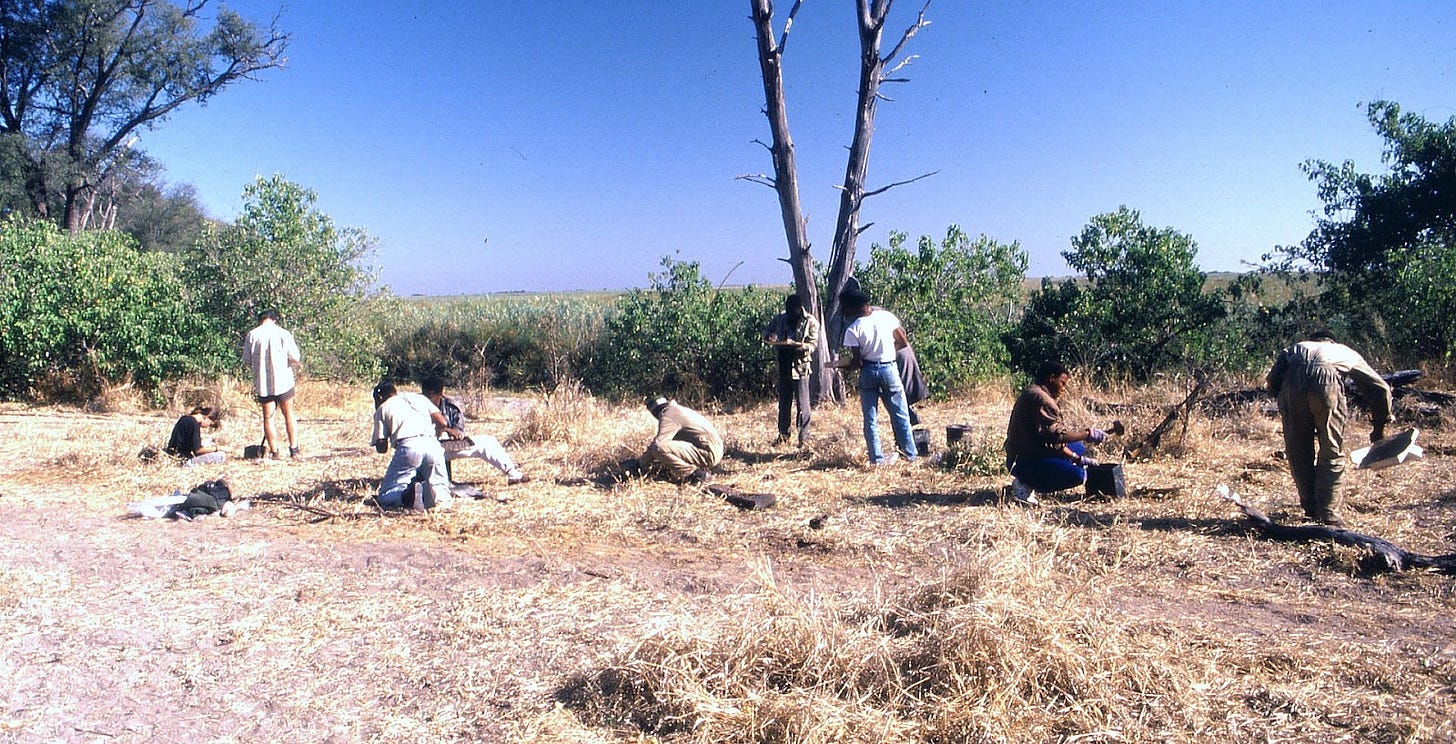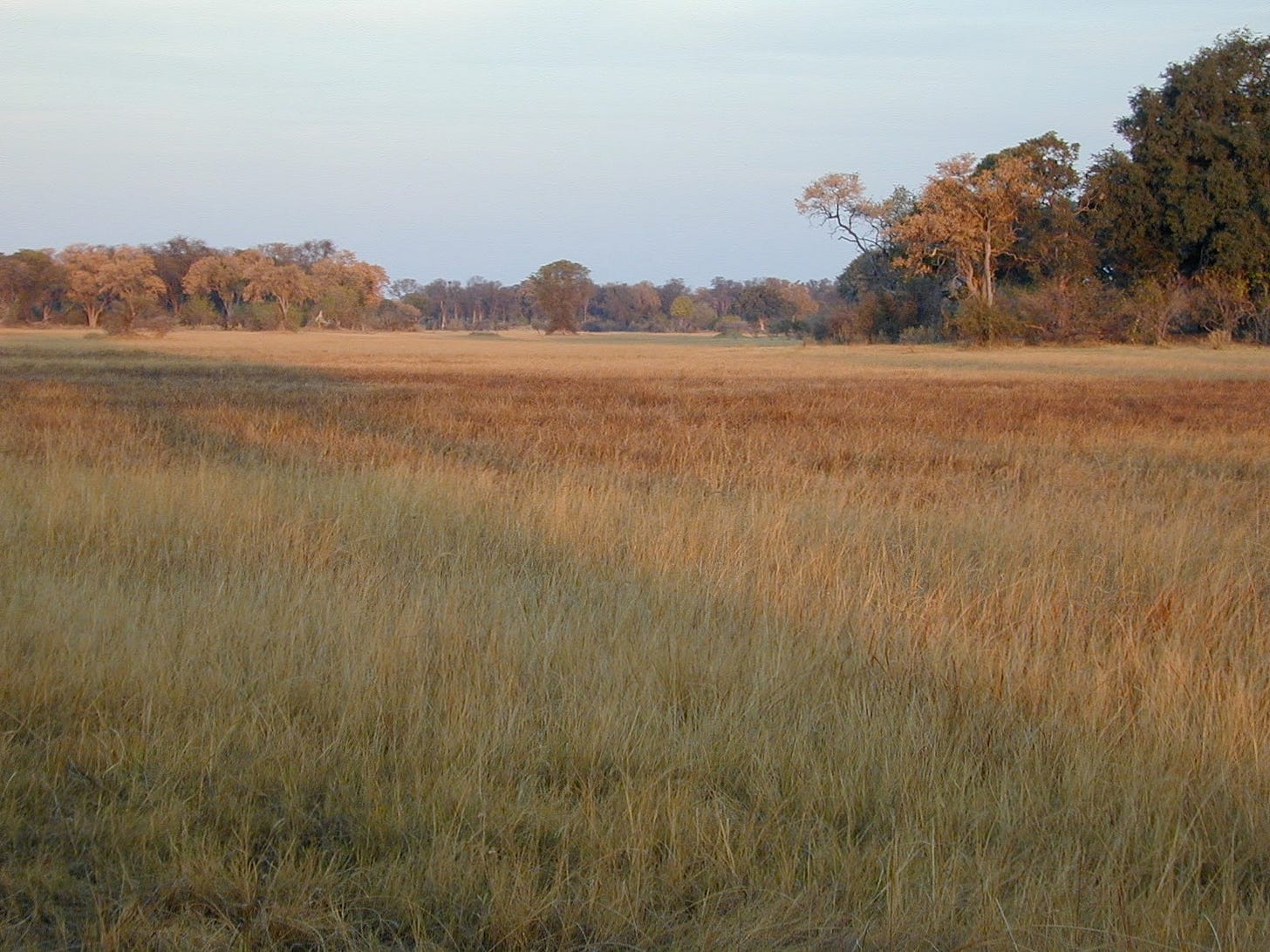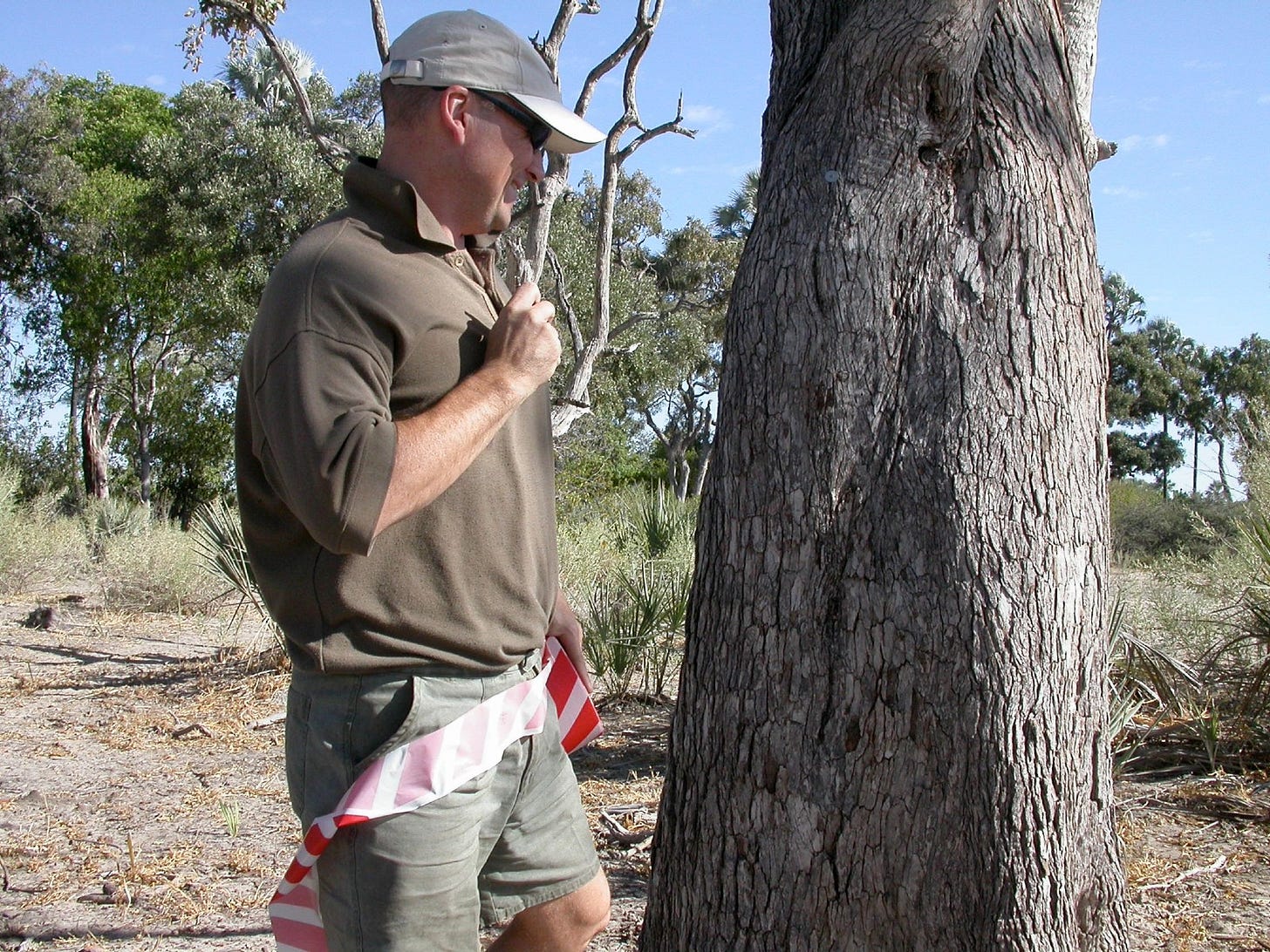Cultivate Curiosity as a Mindful Sceptic
How to unlock solutions to global challenges
In a world grappling with complex environmental and social issues, curiosity might be our most powerful tool. A mindful sceptic is uniquely positioned to harness curiosity's potential to drive innovative solutions.
In this issue of Mindful Sceptics, we’ll explore how cultivating curiosity can transform our approach to global challenges.
The Importance of Cultivating Curiosity?
When I was a PhD student, big hair was necessary to compensate for shoulder pads, and a heady mix of music artists laid down 1980s bangers for the ages. Back then, the old academics frequently told me that science is 99% perspiration and 1% inspiration. Dutifully, I believed them and knuckled down to a career of sports towels and water bottles.
The old boys were correct. Good science does take tenacity and hard work.
For me, it meant many long hours in the laboratory weighing baby woodlice to test theories of reproductive allocation—should a female have many small or few large young? As many as possible above a minimum size, as it turns out.
Yet more hours were spent trudging across remote corners of the Australian outback to empty pitfall traps designed to catch crawling bugs and measure biodiversity. The days sifting soil for the larger soil invertebrates and discussing Kenyan politics with field staff at the Kenyan Agriculture Research Institute outside Nairobi were less taxing but just as sweaty.
In their eagerness to ensure that I knew all about the hard work, the old boys didn’t tell me much about the 1% inspiration part. I think they assumed that this bit was self-evident. Scientists are in the game to ask and answer questions. If they are any good, the question evolves from what is already known, standing on the old boy's shoulders.
And the questions? Well, I took it that they appear, as if by magic, from inspiration that often comes from external sources and is a powerful motivator for specific actions or goals. My mentors missed a trick and a learning opportunity by letting me fall for this assumption.
They forgot to mention curiosity, the internal drive for exploration and understanding motivated by a continuous desire to learn. Both play unique roles in personal and intellectual development. Inspiration often provides energy and motivation, while curiosity fosters a lifelong commitment to exploration and discovery.
They should have said that science is hard work, yes, but it is fuelled by curiosity, the innate drive for exploration and understanding.
All humans have curiosity. It kept us alive on the savanna and spurred us on to occupy habitat across the planet. It has a fair bit to do with our ingenuity and technology. But for a mindful sceptic, it is fundamental and worth a closer look than my former teachers were prepared to give it, especially how to improve it.

Why Curiosity Matters
Cultivating curiosity brings a myriad of benefits. It allows individuals to embrace a sense of wonder, ask questions, and seek new experiences.
Curiousness also helps develop knowledge and understanding, leading to personal growth and fulfilment. Cultivating curiosity is a valuable trait that positively influences various aspects of life, promoting learning, creativity, adaptability, and overall personal and professional development.
In short, curiosity is fun.
Here are some more specific advantages:
Curiosity motivates individuals to seek knowledge and explore new ideas. This drive for learning fosters personal growth and continuously expands one's skills and understanding. It can help sniff out opportunities.
Curiosity fuels creativity by encouraging individuals to question, experiment, and think outside the box. It contributes to the generation of innovative ideas and solutions. Maybe even an Etsy store.
Curious individuals tend to be more adaptable and open to change. Their inquisitiveness helps them navigate uncertainties, explore new possibilities, and adjust to evolving situations. We will all need plenty of this skill in the coming decades.
Curiosity is closely linked to effective problem-solving. Inquisitive individuals approach challenges with a desire to understand and find solutions, leading to more robust and inventive problem-solving processes.
Curiosity enhances memory retention. When individuals are genuinely interested in a topic, they are more likely to remember related information, leading to better recall. One of the main reasons we should let curiosity run wild in the classroom.
Curiosity promotes critical thinking skills by encouraging individuals to question information, consider alternative perspectives, and analyse situations more thoroughly. All of these are central to the Mindful Sceptic.
Curiosity fosters better interpersonal relationships. Asking questions and showing genuine interest in others' experiences and opinions can lead to more meaningful connections and improved communication.
A curious mindset encourages individuals to challenge stereotypes and biases. By seeking to understand diverse perspectives, people can overcome preconceived notions and foster a more inclusive worldview.
Curiosity is a powerful motivator. It drives individuals to pursue goals, overcome challenges, and stay engaged in activities, fostering a sense of purpose and fulfillment.
Curious individuals often exhibit higher emotional resilience. They approach setbacks as opportunities for learning and growth, maintaining a positive and proactive attitude in facing challenges.
Curiosity contributes to more informed decision-making. Inquisitive individuals gather diverse information, consider multiple perspectives, and weigh options more thoroughly before making choices.
Engaging in curiosity and exploration can contribute to fulfilment and overall well-being. It adds excitement and a sense of adventure to life, promoting a positive and enriching experience.
All this, and it makes you feel good. Someone needs to bottle it.

Practical Strategies to Cultivate Curiosity
The good news is that whatever level of curiosity you have, you can enhance it. Take it up a notch. Here are three of the best ways to do it.
Visual Techniques
Everyone responds differently to visual stimuli, so take your pick from the lengthy list of techniques that fit your preferences and learning style. Experimenting with various visual approaches can help you discover what visually sparks your curiosity and enhances your learning experience.
Infographics and Mind Maps—Create or explore infographics and mind maps to represent information and relationships visually. These visual aids can make complex concepts more accessible and encourage a deeper understanding. Despite what we were told at school, linear learning is not the only option.
Visual Storytelling—Use visuals to tell stories. Whether through photographs, illustrations, or multimedia presentations, storytelling engages the imagination and sparks curiosity about the narrative.
Interactive Graphics and Videos—Employ interactive graphics or videos to provide dynamic, engaging content. Interactive elements encourage exploration, allowing individuals to delve deeper into topics that capture their curiosity.
Data Visualization—Use data visualization techniques such as charts, graphs, and diagrams to make information more comprehensible and intriguing. Visualizing data can prompt questions and stimulate curiosity about patterns or trends. We recommend ‘Our World in Data’ for excellent examples related to global issues.
Art and Creativity—Incorporate artistic elements into learning or workspaces. Surrounding yourself with visually appealing and creative stimuli can inspire curiosity and innovative thinking. This one is a bit out there for the nerds, but it works.
Visual Prompts and Stimuli—Use images, objects, or visual prompts related to a subject to stimulate curiosity. Visual cues can trigger associations and spark interest in exploring related concepts or ideas.
Visual Metaphors—Employ visual metaphors to represent abstract or complex ideas. Connecting concepts to relatable images can make them more tangible and enhance curiosity about their implications.
Virtual Reality (VR) or Augmented Reality (AR)—Explore immersive technologies like VR or AR to provide interactive and three-dimensional experiences. These technologies can transport individuals to new environments, fostering a sense of exploration and curiosity.
Visual Journaling—Keep a visual journal where you sketch or collect images related to your interests and questions. Visual journaling can serve as a creative outlet and a visual representation of your curiosity journey.
Create Visual Challenges—Design visual challenges or puzzles related to a topic of interest. Engaging in activities that require visual problem-solving can stimulate curiosity and critical thinking.
Explore Virtual Tours and Exhibits—Take virtual tours or explore online exhibits to experience places, cultures, or historical events visually. Virtual exploration can fuel curiosity about the world and its diverse aspects.
Surround Yourself with Curious People
When I write the acknowledgements for my books, it is tempting to cut and paste the list of individuals who have inspired me, irrespective of their contribution to the book. I am lucky and forever grateful, for it is a long list.
Academics are a tough crowd. You have to work hard to gain their confidence before they open up and tell you what interested and inspiring people they are. Some stay hidden in their offices, but I can be charming when I want to, which is a valuable skill for a mindful sceptic.
Entrepreneurs, with whom I briefly shared the stage, are more gregarious and free with their curiosity, if not their IP.
Politicians and their advisors in the civil service are not known for their curiosity, given they are forced to tow the party line. No matter. They are readily baited to get a few hints at what they are thinking.
I can attest that surrounding yourself with curious people is sage advice. It works.
Deepen Your Sense of Wonder
Curiosity is much easier if you find beauty and see complexity in the world. Here are some strategies, many already familiar to a mindful sceptic, to help you deepen your sense of wonder:
Practice Mindfulness—Engage in mindfulness to stay present and fully experience the current moment. Paying attention to your surroundings without judgment can uncover the extraordinary in the ordinary and deepen your sense of wonder.
Connect with Nature—Spend time in natural settings to witness the beauty and complexity of the natural world. Whether walking in the woods, watching a sunrise, or observing wildlife, nature evokes a profound sense of wonder.
Practice Gratitude—Cultivate gratitude for your life's simple and extraordinary aspects. Reflecting on and appreciating what you have can enhance your wonder and awe.
Explore Art and Creativity—Immerse yourself in various forms of art, literature, music, or other creative expressions. The beauty and creativity found in artistic endeavours can evoke a sense of wonder and inspiration.
Learn Something New—Challenge yourself to acquire new knowledge or skills. Learning and discovery can reignite a childlike wonder as you encounter the unfamiliar.
Embrace Wonder Through Others' Eyes—Spend time with children or people who approach the world with fresh eyes. Their enthusiasm and curiosity can be contagious and inspire you to see the world with a renewed sense of wonder.
Travel and Explore—Visit new places and experience different cultures. Exposing yourself to diverse landscapes, people, and traditions can broaden your perspective and deepen your appreciation for the world's wonders.
Contemplate the Cosmos—Spend time contemplating the vastness of the universe, whether through stargazing, reading about astronomy, or reflecting on its complexity. Considering its enormity can evoke a profound sense of wonder.
Reflect on Life's Mysteries—Take time to ponder the mysteries of life, consciousness, and existence. Reflecting on the unknown can create a sense of wonder and awe, prompting a deeper appreciation for the profound aspects of our existence.
Remember that curiosity often arises from wonder, mindfulness, and openness. Embrace the joy of discovery, approach the world with a sense of awe, and allow yourself to be captivated by the marvels surrounding you.
Top Strategies to Stay Curious
Becoming more curious is good.
It is better to stay curious, and once the spark is there, here are three simple ways to do this.
Cultivate a Personal Growth Mindset:
Ask Questions and Seek Answers:
Diversify Your Interests and Experiences:
If all these lists are a little overwhelming and you want a shorter one, here are three effective strategies to cultivate and maintain curiosity:
Embrace the belief that your abilities and intelligence can be developed through effort, learning, and perseverance. A growth mindset encourages curiosity by viewing challenges as learning opportunities rather than obstacles. Embrace the idea that your skills and knowledge are not fixed, and approach new experiences with a sense of openness and willingness to learn.
Actively question the world around you. Ask questions to deepen your understanding whenever you encounter new information or experiences. Develop a habit of seeking answers through research, conversation, or exploration. Curiosity thrives on a genuine desire to understand, so be proactive in satisfying your curiosity by actively engaging with the world and seeking knowledge. Think of asking questions as a skill that can be learned and honed.
Broaden your horizons by exploring various interests and experiences. Deliberately expose yourself to new subjects, activities, or cultures. Attend events, read different genres, converse with people from diverse backgrounds, and experiment with new hobbies. Diversifying your experiences keeps things interesting and provides fresh stimuli for your curiosity to thrive. If you can, travel and talk to people along the way.

Curiosity as a Mindful Sceptic
A Mindful Sceptic can question ideas and think critically and objectively no matter what cultural, social or personal beliefs are in the mind. It’s a ninja skill that starts with curiosity.
While the regular sceptic can be a bit of a dick, the mindful modifier softens everything, removes judgement and allows the sceptic to pay full attention to what is happening inside and outside, moment by moment, without judgment.
Mindfulness for the sceptic is the essential moderator of the weakness in scepticism for constant questioning and linear cause-effect logic. Being aware of feelings inside and out makes scepticism so much more effective.
Mindful sceptics don’t just ask questions; they know where to find the right question. They are aware of the situation, context and the relative importance of their scepticism to themselves and everyone else.
Mindful sceptics adopt a growth mindset, ask questions, seek answers, and diversify experiences to foster and maintain a curious outlook on life. Curiosity is a dynamic trait that can be nurtured and sustained through intentional efforts to explore, learn, and remain open to the world's richness.
It makes so much sense.
Key Points
Cultivating curiosity is an internal drive crucial for personal and intellectual development. It distinguishes between inspiration, which provides energy, and curiosity, which fosters a lifelong commitment to exploration and discovery.
Curiosity helps embrace wonder, prompts smart questions, and encourages new experiences. Specific advantages include motivation for learning, enhanced creativity, adaptability, effective problem-solving, better memory retention, and improved critical thinking.
Anyone can improve their curiosity through visual techniques like infographics and storytelling, surrounding oneself with curious individuals, and deepening a sense of wonder through mindfulness, nature connection, and gratitude practices. Embrace the unknown, stay open-minded, follow their interests, and read widely to stimulate curiosity in daily life.
The top three strategies to stay curious are 1) cultivating a personal growth mindset, 2) actively asking questions and seeking answers, and 3) diversifying interests and experiences.
Mindful sceptics use curiosity to question ideas, think critically and objectively, and employ mindfulness as a moderator for effective scepticism.
In the next issue
How mindful scepticism transforms eco-paralysis into ecological insight. This is not just another 'feel better' piece but a practical toolkit for navigating environmental truths.
A Curiosity Challenge
This week, identify one environmental issue you've made assumptions about. Approach it with fresh curiosity. What new questions arise? How might these lead to novel solutions?"
Comment below, and we’ll respond.




